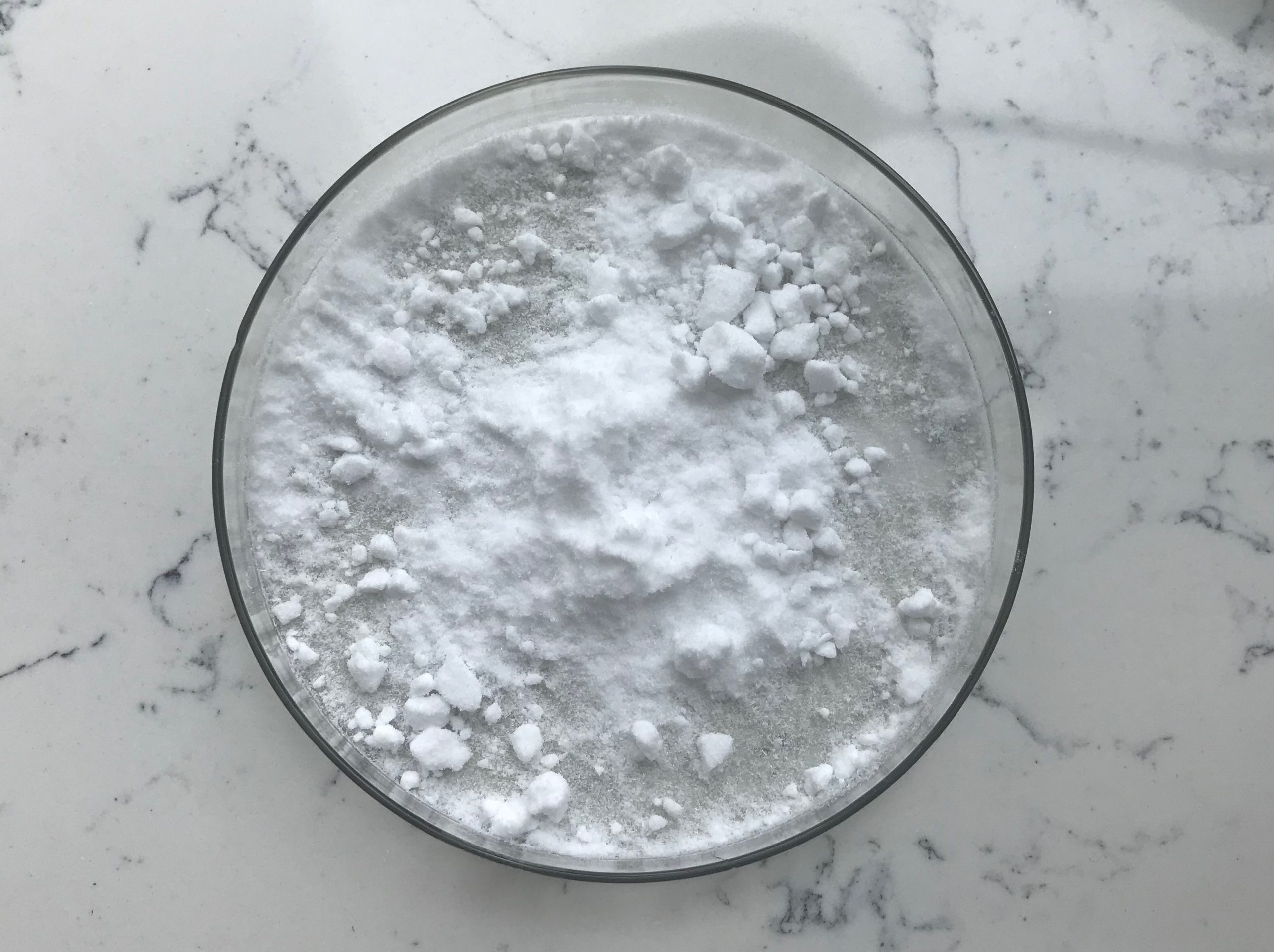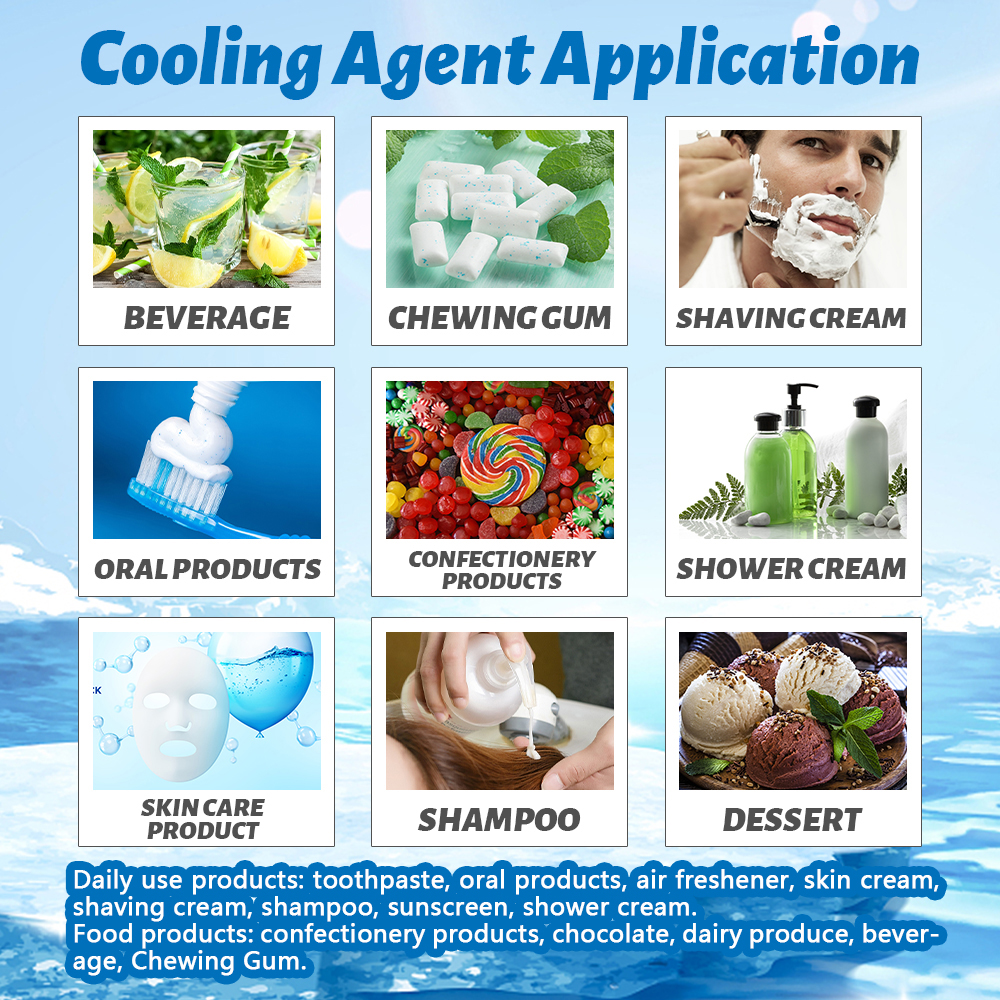WS-23 is a synthetic cooling agent used in various products, primarily in the food and beverage industry, cosmetics, and personal care products. It provides a cooling sensation similar to menthol but without the minty flavor or odor. Below are the materials and methods typically associated with WS-23:
Materials of WS-23:
WS-23 (N-2,3-Trimethyl-2-isopropylbutamide): The primary active ingredient, WS-23, is a synthetic compound that imparts the cooling effect.
Solvent or Carrier: WS-23 is typically used in a carrier or solvent, such as propylene glycol or ethanol, to dilute the concentrated active ingredient and make it easier to incorporate into products.

Methods of WS-23:
Weighing and Mixing: The first step is to accurately weigh the desired amount of WS-23. The amount used can vary depending on the specific application and desired cooling intensity.
Dissolving in Solvent: WS-23 is then dissolved in an appropriate solvent or carrier. This step is crucial to ensure even distribution of the cooling agent in the final product. The solvent can be propylene glycol, ethanol, or another suitable carrier.
Quality Control: Quality control checks may be performed to ensure that the WS-23 is dissolved completely and that the solution is uniform in concentration. This is particularly important in industries like food and beverages, where consistent taste and effect are essential.
Incorporation into Product: Depending on the application, the WS-23 solution can be mixed with other ingredients in the product formulation. For example, in the food industry, it can be added to a beverage or confectionery product. In cosmetics, it can be included in a cream or gel formulation.
Testing and Sensory Evaluation: After incorporating WS-23 into the product, sensory evaluations are conducted to ensure that the cooling sensation is at the desired level. Taste panels or sensory panels may be used for food and beverages, while panelists or test subjects can be used for cosmetic or personal care products.
Adjustment: Depending on the results of sensory evaluation, the concentration of WS-23 may be adjusted to achieve the desired cooling effect. This may involve adding more WS-23 solution or diluting it further.
Packaging: Once the desired cooling effect is achieved, the final product is packaged for distribution and sale. Proper labeling and safety regulations should be adhered to.
It’s important to note that the specific materials and methods may vary depending on the manufacturer and the intended application of WS-23. Regulatory guidelines in different industries, such as food and cosmetics, must also be followed to ensure product safety and compliance.

The processing of WS-23
WS-23 is a cooling agent often used in the food and beverage industry to impart a cooling sensation in various products, such as candies, chewing gum, and beverages. It is a synthetic compound designed to mimic the cooling effect of menthol without the minty flavor, making it versatile for a wide range of applications.
The processing of WS-23 involves its synthesis and purification. The exact details of the manufacturing process are proprietary and may vary between manufacturers. However, I can provide a general overview of how cooling agents like WS-23 are typically produced:
Chemical Synthesis: WS-23 is typically synthesized through chemical reactions. The exact chemical synthesis can vary, but it often involves starting materials that undergo multiple reactions to produce the final compound. The synthesis is carried out in controlled conditions to ensure purity and consistency.
Purification: After the synthesis, the product is subjected to purification processes to remove impurities and by-products. This can involve techniques such as recrystallization, distillation, or chromatography to isolate the desired compound.
Quality Control: Quality control measures are essential at various stages of production. Analytical techniques such as spectroscopy and chromatography are used to verify the purity and quality of the WS-23 compound.
Formulation: WS-23 is often supplied as a concentrated liquid or powder. Manufacturers may blend it with other ingredients or carriers to create a more easily manageable form for incorporation into final products. This can include adjusting the concentration to achieve the desired cooling effect in the end product.

Packaging: Once the WS-23 compound is ready, it is typically packaged in suitable containers, often with clear labeling, for distribution to companies in the food and beverage industry.
It’s important to note that the production and use of cooling agents like WS-23 are subject to regulatory guidelines and safety assessments, as they are intended for human consumption. Manufacturers must adhere to safety and quality standards to ensure that the product is safe for consumption.
Keep in mind that the specific manufacturing processes may vary between producers, and detailed information on proprietary processes may not be publicly available. It’s essential to work with reputable suppliers and adhere to regulatory guidelines when using WS-23 in food and beverage products.
